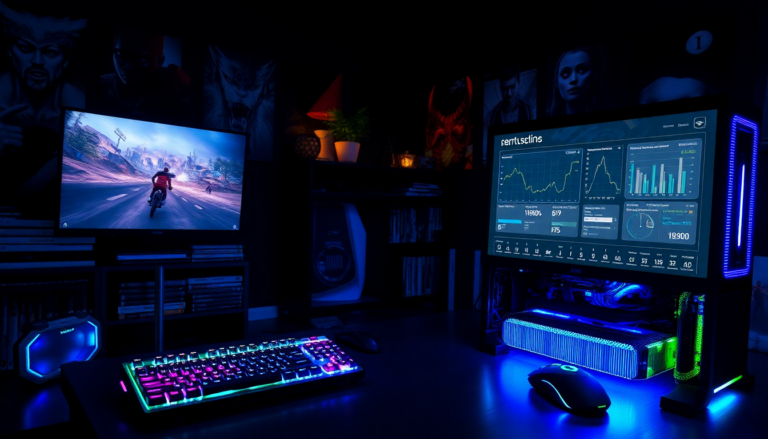Argomenti trattati
The gaming landscape is constantly changing, and Valve’s latest innovation is making waves. Have you ever wished you could monitor your gaming performance in real-time without any hassle? Well, now you can! With the introduction of an in-game overlay performance monitor on Steam, players can easily track their frames per second (FPS) and take advantage of advanced frame generation technologies like DLSS and FSR. This guide is here to help you install and configure this powerful tool on both Windows and Linux systems, so you can maximize your gaming experience.
Discovering the Features of Steam’s Performance Monitor
Steam’s new performance monitor isn’t just another feature; it’s a game-changer for those looking to elevate their gameplay. Imagine being able to see your actual FPS, including those enhanced by cutting-edge technologies like DLSS and FSR. This real-time insight gives players a clear picture of how their systems are performing. With the ability to display both enhanced and baseline FPS at one-second intervals, users can immediately assess the impact of frame generation on their gaming sessions. Isn’t it great to have such detailed feedback right at your fingertips?
What makes this monitor even more appealing is its seamless integration into the Steam platform. You won’t have to rely on third-party tools anymore! If you’re used to using applications like MangoHud, you’ll find this transition smooth and natural. The performance monitor not only tracks FPS but also provides an in-depth overview of system metrics, empowering players to make informed decisions about their gaming setups.
Your Step-by-Step Guide to Installation and Configuration
Ready to get started with the new performance monitor? It’s easier than you might think! Here’s a straightforward step-by-step guide to make sure your system is primed for this exciting feature:
- Open Steam and head to the Settings menu.
- Under the Interface tab, select “Steam Beta Update” to get the latest updates.
- Restart Steam to apply the changes.
- Return to Settings and scroll down to the “In Game” section.
- Find the Overlay Performance Monitor option and enable it.
- Choose your preferred position on the screen for the overlay.
- Adjust the Performance detail level to suit your needs; more detail often means a better experience.
- For optimal readability, tweak the text scaling level and background opacity.
- Close the settings and launch your favorite game to see the overlay in action.
Don’t forget to pay attention to text scaling, especially if you’re using a high-resolution display. You want to ensure that everything is easy to read—after all, who enjoys squinting at tiny text while gaming?
Performance Monitoring on Linux Systems
If you’re a Linux gamer, you’re in luck! The new performance monitor is just as accessible for you. Users testing on setups like the Bazzite have reported smooth integration and functionality. The configuration steps are quite similar to those on Windows, allowing Linux users to enjoy the same benefits without missing a beat.
Being able to monitor performance in real-time across both platforms highlights Steam’s commitment to creating an inclusive gaming environment. As gamers dive deeper into the capabilities of their systems, having a reliable performance tool at their disposal can lead to more enjoyable and optimized gaming sessions. Why not take the leap and see how it can enhance your gameplay today?

